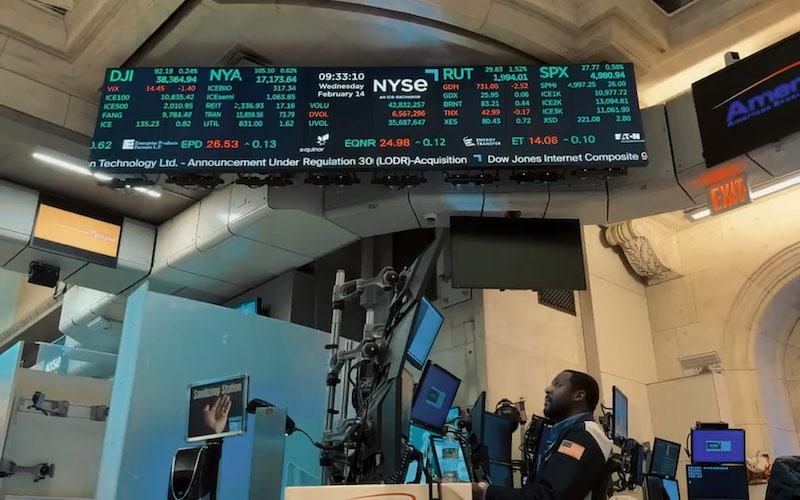The tariff issue has once again become the focus of US financial markets
2025-10-18 01:01:32

Even before the tariff issue came into the discussion, the market had already begun anticipating a deeper interest rate cut from the Federal Reserve. Will US President Trump follow through on his pledge to impose tariffs? Most investors believe this is unlikely. However, if implemented, it is estimated that the average US tariff rate would rise to 31%, exceeding the level around "Reciprocal Tariff Day," a high rate that proved unsustainable.
Last week, the market's reaction to tariff threats was noteworthy, with the topic of TACO trading resurfacing. TACO trading has been a popular investment strategy on Wall Street since Trump took office. TACO stands for "Trump Always Chickens Out," meaning "Trump always chickens out." Given that Trump's recent tariff threats have been dismissed by the market, this recent reaction suggests that some investors are beginning to wary of tail risks in the Sino-US trade relationship (characterized by "low probability, high impact"). Lynn Song noted that China, supported by demand from other regions and high-value export industries that are less dependent on the US market, has demonstrated strong resilience to US tariffs.
Whatever the cause, the tariff news sent U.S. stocks and short-term yields lower and the dollar weaker, suggesting investors believe further tariffs will prompt the Federal Reserve to adopt more easing policy.
Six months after "Reciprocal Tariff Day," current data suggests a shaky job market and muted inflation. This view will be tested next Friday when the US releases some official data. Given the ongoing government shutdown and data gaps, investors will need to be particularly cautious with this data.
ING economist James Knightley believes that tariffs will lead to further price pressures. Tariff revenues in the summer accounted for only 10% of total imports, significantly lower than the 18% projected based on announced policies and 2024 import data. While the tax revenue situation is expected to improve in the coming months, businesses may continue to face profit pressures or be more likely to pass on the costs to consumers.
Knightley singled out auto prices, a key area impacted by U.S. tariffs, as new vehicle prices have remained stable. However, a price increase appears only a matter of time, with a recent fire at a major aluminum supplier to the auto industry further exacerbating supply pressures.
Nevertheless, the spread of the tariff shock means that US inflation will peak lower but persist longer. This will allow disinflationary factors, such as slowing rent inflation, to play a more prominent role. Consequently, we expect the Federal Reserve to cut interest rates four more times than implied at its September meeting.
What happens, however, if Trump's tariffs are ruled illegal by the Supreme Court? The Supreme Court will hear a case in early November challenging the imposition of broad tariffs based on emergency powers, a case that legal experts generally believe Trump is likely to lose.
If the tariffs are repealed, the president could reimpose a 15% tariff for 150 days through Section 122, or take other sector-specific tariff measures. This could lower the effective tariff rate on US imports, easing inflation and labor market pressures. If the market believes the job market is the Fed's current priority, the number of rate cuts could be reduced.
However, the situation remains complex and fluid. Unfavorable judicial rulings could trigger disruptions, potentially entitle businesses to refunds of tariffs already paid, and uncertainty about replacement tariffs could dampen market sentiment. Furthermore, reduced tariff revenue would further impact the US fiscal deficit, which already exceeds 6%.
In short, tariffs have returned to the market spotlight and will dominate this fall. Investors need to closely monitor related developments to prepare for potential market volatility.
- Risk Warning and Disclaimer
- The market involves risk, and trading may not be suitable for all investors. This article is for reference only and does not constitute personal investment advice, nor does it take into account certain users’ specific investment objectives, financial situation, or other needs. Any investment decisions made based on this information are at your own risk.





















